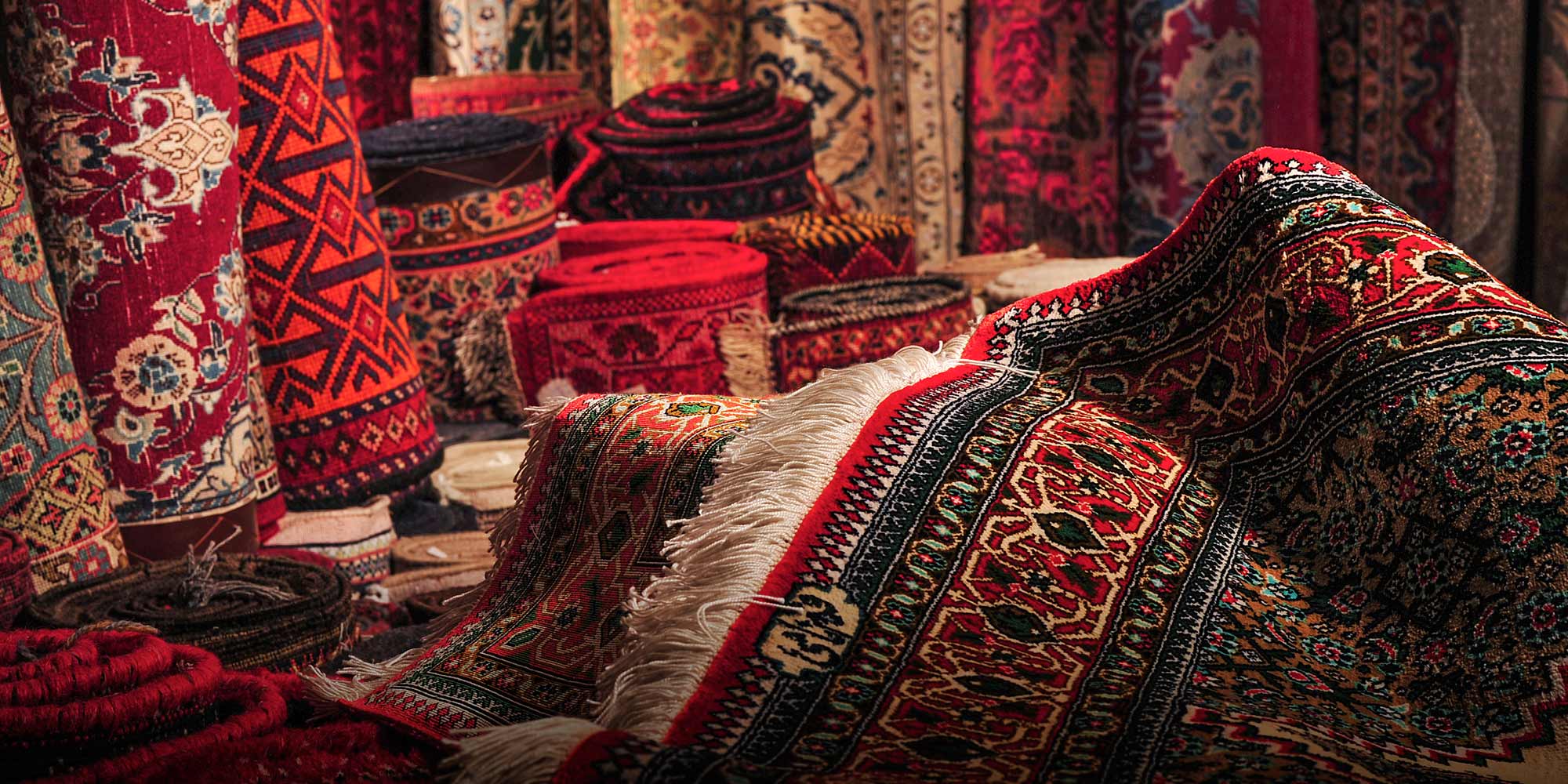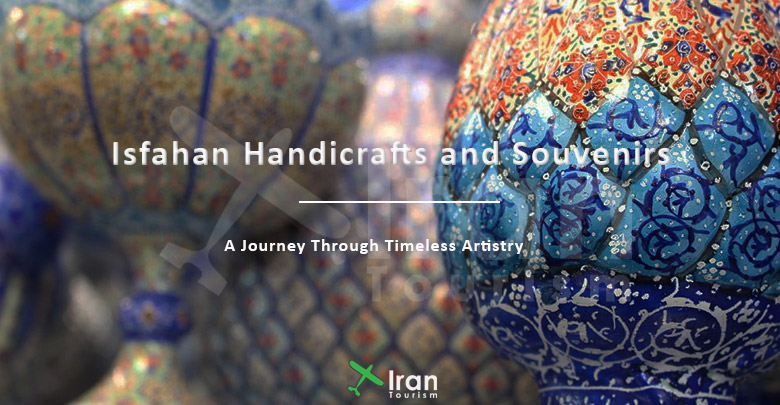Introduction to Isfahan’s Rich Cultural Heritage
Isfahan, a city renowned for its vibrant cultural heritage and artistic excellence, stands as a testament to the rich history of Iran. Known as “Nesf-e-Jahan,” meaning “Half the World,” Isfahan’s legacy in art and architecture is globally recognized. Central to this legacy are the Isfahan handicrafts and souvenirs, which embody the city’s artistic spirit and centuries-old traditions. Stay with the Iran Travel Guide Center.
The Essence of Isfahan Handicrafts and Souvenirs
Minakari: The Enamel Wonder
Minakari, or Persian enamelwork, is a captivating art form that has been mesmerizing people for centuries with its vibrant colors and intricate designs. This traditional Persian craft involves the fusion of colored minerals and metal to create stunning pieces of art. The process is meticulous, involving the application of enamel paint on metals such as copper, gold, or silver, followed by a careful firing process that sets the enamel. The result is a glossy, glass-like finish that brings out a kaleidoscope of colors. Minakari is often seen in jewelry, vases, bowls, and decorative plates, each piece telling a unique story through its design.
For those interested in purchasing Minakari, the best place to look is in the bazaars of major Iranian cities like Isfahan and Tehran. The Grand Bazaar of Isfahan, in particular, is famous for its extensive collection of Minakari works. Here, you can find authentic pieces, ranging from small trinkets to elaborate artworks, directly from the artisans who create them. Additionally, several online stores specializing in Persian handicrafts offer a selection of Minakari items, making them accessible to a global audience.
Khatamkari: The Art of Inlay
Khatamkari is an exquisite Persian art form that involves the inlaying of small pieces of wood, bone, and metal to create intricate geometric patterns. This art is a testament to the precision and skill of the craftsmen, requiring immense patience and an eye for detail. The patterns are usually composed of star-shaped designs, meticulously assembled to form decorative surfaces on boxes, frames, chessboards, and even furniture. Khatamkari is not just an art; it’s a labor of love that reflects the rich artistic heritage of Iran.
To acquire authentic Khatamkari pieces, one should visit the traditional bazaars in cities like Shiraz and Isfahan. The Vakil Bazaar in Shiraz and the markets surrounding Naqsh-e Jahan Square in Isfahan City are particularly renowned for their selection of Khatamkari. These bazaars offer a chance to see the artisans at work and to purchase directly from them. For those who cannot travel to Iran, numerous online platforms provide a wide range of Khatamkari products, delivering the essence of Persian artistry to your doorstep.
Persian Carpets: A Weave of Tradition
Persian carpets are world-famous for their quality, intricate designs, and rich cultural significance. Each carpet is a masterpiece of craftsmanship, woven by skilled artisans who often spend years creating a single piece. The designs are diverse, ranging from medallion and floral patterns to hunting scenes and pictorial representations, each with its own story and symbolism. The dyes used are typically natural, giving the carpets their vibrant and long-lasting colors. Owning a Persian carpet is not just about adding a decorative element to a space; it’s about inheriting a piece of Persian history and culture.

Persian Carpets
For those looking to purchase an authentic Persian carpet, Iran’s major cities like Tabriz, Kashan, and Isfahan are the best places to start. Each region has its unique style and weaving techniques, offering a wide variety for buyers. The Tehran Carpet Market and Tabriz Bazaar are famous for their extensive collections. Additionally, specialized carpet shops
in major cities around the world often have a selection of Persian carpets, catering to those who appreciate their artistry but cannot travel to Iran. Online marketplaces and auctions are also viable options, but it’s important to ensure the authenticity and quality of the carpets when purchasing through these channels. Reputable dealers will provide certificates of authenticity and detailed information about the carpet’s origin, materials, and craftsmanship. Whether bought in a bustling Iranian bazaar or from a distinguished international gallery, a Persian carpet is a timeless investment, bringing the legacy of Persian art into any home.
Ghalamzani: The Elegance of Metalwork
Ghalamzani, or Persian metal engraving, is an ancient art form that has been a cornerstone of Iranian craftsmanship for centuries. This intricate technique involves the carving and etching of elaborate designs onto various metals such as copper, brass, silver, and gold. The art of Ghalamzani is not just a display of exceptional skill but also a reflection of the rich cultural and artistic heritage of Iran. The process begins with the careful selection of a high-quality metal piece, which then undergoes a series of meticulous steps including designing, engraving, and sometimes inlaying with precious stones.
The designs in Ghalamzani are often inspired by Persian poetry, mythology, and Islamic art, featuring intricate floral patterns, detailed images of birds and animals, and scenes from epic tales. These motifs are not randomly chosen; they carry deep symbolic meanings and often tell stories of love, valor, and spirituality. The artists, known as Ghalamzans, are highly skilled craftsmen who have usually inherited and honed their craft through generations. They use a variety of specialized tools to etch the designs onto the metal surface, a process that requires patience, precision, and a deep understanding of the traditional motifs.
Ghalamzani is more than just an art form; it’s a legacy that connects the past with the present. Each piece of metalwork is unique, bearing the individual touch of the artisan who created it. These pieces are not merely decorative; they are functional artworks that are used in everyday life, such as intricately engraved trays, vases, boxes, and even jewelry. In modern times, while the essence of the art remains true to its roots, Ghalamzani has evolved, with artisans experimenting with contemporary designs and techniques. This evolution ensures that this ancient art form remains relevant and continues to captivate admirers worldwide.
Hand-Painted Miniatures: A Canvas of Beauty
Hand-painted miniatures are a testament to the meticulous artistry and rich cultural traditions of miniature painting, a craft that has flourished for centuries across various cultures. In the realm of Persian art, these miniatures are not just paintings; they are a confluence of poetry, philosophy, and visual art, intricately woven into a small canvas. The art of creating these miniatures involves precise brushwork and a vibrant palette to depict scenes from literature, mythology, and daily life. The level of detail in each painting is astounding, with every brushstroke adding to a narrative that is both complex and captivating.
In Iran, the tradition of miniature painting reached its zenith during the Safavid era, with artists like Reza Abbasi leading the way. Abbasi’s work is characterized by its naturalistic qualities and rich, expressive content. Another notable name in the field of Persian miniatures is Behzad, whose mastery of composition and color brought new life to the art form. These artists were not just painters; they were storytellers who captured the essence of Persian culture and history in their work. Their miniatures often featured scenes from famous Persian poetic works, such as those by Hafez and Rumi, bringing these stories to life in vivid color and intricate detail.
In the contemporary art world, the legacy of hand-painted miniatures is carried forward by artists who blend traditional techniques with modern themes. Mahmoud Farshchian, for instance, is a renowned Iranian master of miniatures, known for his innovative approach and ethereal style. His works are celebrated for their dynamic composition and surrealistic quality, often exploring themes of love, beauty, and spirituality. The art of miniature painting, through the works of these maestros, continues to enchant art enthusiasts around the world, offering a glimpse into a world where every tiny canvas tells a profound story.
Exploring Isfahan’s Bazaars: A Haven for Souvenir Hunters
The Grand Bazaar: A Historical Marketplace
The Grand Bazaar of Isfahan, with its bustling lanes and historic architecture, is the heart of the city’s trade. Here, visitors can find an array of handicrafts, from intricate metalwork to hand-painted ceramics, each piece reflecting the city’s artistic heritage.
The Art of Bargaining
Shopping in Isfahan is an experience in itself, with bargaining playing a key role. Engaging with local artisans and vendors not only allows for a better deal but also offers a glimpse into the friendly and hospitable nature of the Iranian people.
The Cultural Significance of Isfahan Handicrafts and Souvenirs
More Than Just Souvenirs
Isfahan’s handicrafts and souvenirs transcend the ordinary, serving as emissaries of a profound cultural legacy. Each item, be it a meticulously handcrafted carpet or a finely detailed miniature painting, is imbued with generations of history, rich traditions, and the personal narratives of the artisans who brought them to life.
Preserving Traditional Arts
By purchasing these handicrafts, visitors play a role in keeping these ancient arts alive. In a world rapidly moving towards industrialization, these souvenirs offer a connection to the past and help sustain the livelihoods of the local artisans.
Conclusion: The Enduring Charm of Isfahan Handicrafts and Souvenirs
Isfahan’s handicrafts and souvenirs are not just items of purchase; they are treasures that embody the soul of this ancient city. They represent a legacy of craftsmanship passed down through generations, a testament to the enduring spirit of Iranian art and culture. For anyone visiting Isfahan, these souvenirs are a tangible piece of the city’s heart and history, a reminder of the beauty and craftsmanship that is “Half the World.”



No comment